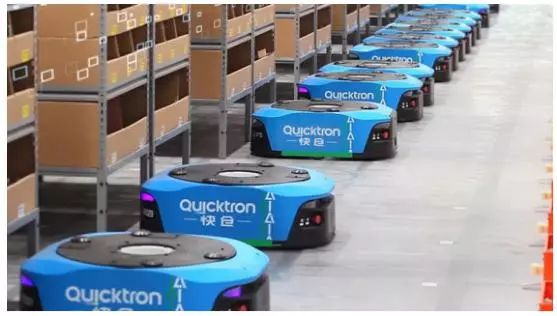In recent years, the concept of unmanned has gradually been applied to various industries in society, such as unmanned retail, unmanned driving, unmanned factories; and unmanned sorting robots, unmanned trucks, and unmanned trucks. More and more new equipment has begun to put into practical use.
Warehousing management occupies a core position in logistics management. There are many drawbacks in traditional warehousing management. Through smart logistics, upgrading equipment technology, enhancing the level of automation, and realizing the strategy of replacing people with machines, it can effectively solve the existing pain points of warehousing logistics management. Among them, the Automated Guided Vehicle (AGV) is an indispensable tool in the intelligent logistics warehouse.

The AGV trolley mainly realizes the function of locating the position of the goods, picking the goods by the optimal path, and then automatically sending the goods to the destination. Whether it is navigation planning or obstacle avoidance, perceiving information about the surrounding environment is the first step. In terms of obstacle avoidance, mobile robots need to obtain real-time information about obstacles around themselves through sensors, including information such as size, shape, and location. There are various sensors used in obstacle avoidance, each with different principles and characteristics. At present, there are mainly ultrasonic sensors, vision sensors, laser sensors, infrared sensors and so on.
the ultrasonic sensor is a low-cost, simple implementation method, and mature technology. It uses ultrasonic sensors to avoid obstacles, that is, a piezoelectric or electrostatic transmitter generates an ultrasonic pulse with a frequency of tens of kHz to form a wave packet. , The system detects reverse sound waves above a certain threshold, and uses the measured flight time to calculate the distance after detection, and obtains information about obstacles around itself in real time, including the size, shape and location of the obstacles.

The AGV trolley mainly realizes the function of locating the position of the goods, picking the goods by the optimal path, and then automatically sending the goods to the destination. Whether it is navigation planning or obstacle avoidance, perceiving information about the surrounding environment is the first step. In terms of obstacle avoidance, mobile robots need to obtain real-time information about obstacles around themselves through sensors, including information such as size, shape, and location. There are various sensors used in obstacle avoidance, each with different principles and characteristics. At present, there are mainly ultrasonic sensors, vision sensors, laser sensors, infrared sensors and so on.
the ultrasonic sensor is a low-cost, simple implementation method, and mature technology. It uses ultrasonic sensors to avoid obstacles, that is, a piezoelectric or electrostatic transmitter generates an ultrasonic pulse with a frequency of tens of kHz to form a wave packet. , The system detects reverse sound waves above a certain threshold, and uses the measured flight time to calculate the distance after detection, and obtains information about obstacles around itself in real time, including the size, shape and location of the obstacles.
Post time: Nov-16-2021
